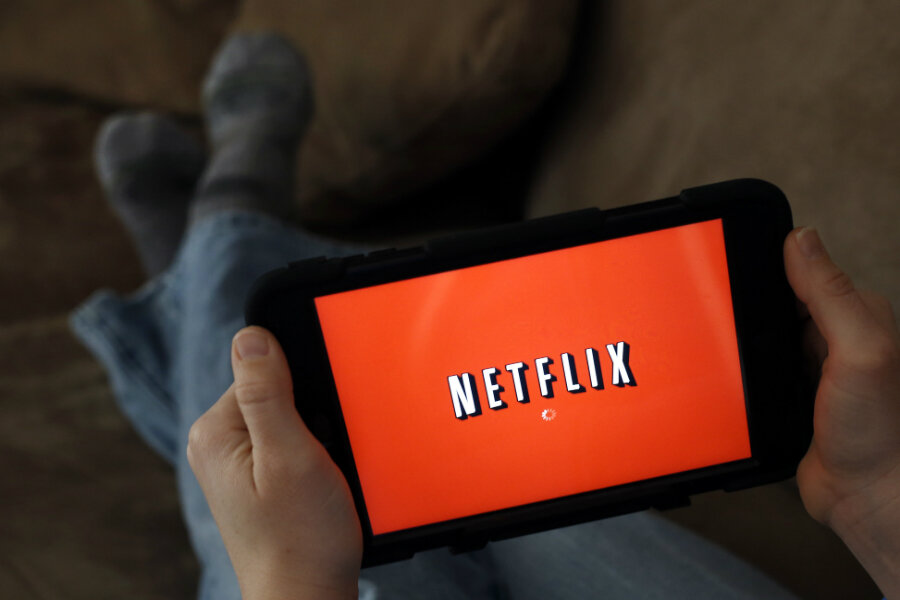Netflix subscribers continue to grow, so why is the company borrowing to pay its bills?
Loading...
| San Francisco
Netflix is pulling in new viewers and award nominations in droves, but the online video service still faces a long-term problem: Its acclaimed programming line-up is costing far more money than what subscribers pay for it.
That hasn't been a big issue so far, thanks to investors' willingness to accept scant profits in exchange for robust subscriber growth.
Netflix delivered on that front again Monday, announcing that it added 5.2 million subscribers in the second quarter covering April to June. That's the largest increase ever during the period, which has always been the company's slowest time of year.
Wall Street rewarded Netflix by driving up its stock by more than 10 percent to $178.30 in extended trading, putting the shares on track to hit a new high in Tuesday's regular trading.
International costs
The Los Gatos, Calif., company now has 104 million subscribers worldwide. For the first time in its history, most of those subscribers (slightly more than 52 million) are outside the United States.
That milestone could further complicate Netflix's cost issues, since the company will need to keep creating more shows that appeal to the unique interests of viewers in countries such as Japan, India, and Indonesia.
"It is going to be imperative for them to have more locally produced content," says CFRA Research analyst Tuna Amobi. "They can't afford to pursue a 'one-size-fits-all' strategy."
As part of its efforts to boost its profits, Netflix is becoming more aggressive about dumping shows that aren't drawing enough viewers to justify their costs. In the second quarter, Netflix jettisoned both the high-concept science fiction show "Sense 8" and the musical drama "The Get Down."
In a Monday letter to shareholders, Netflix CEO Reed Hastings made it clear that the company plans to exert more discipline in the future. So far, Netflix has renewed 93 percent of its original series, much higher than the historical rate of traditional TV networks.
"They are becoming more like any other Hollywood studio and paying more attention to the economics of their shows," Mr. Amobi said.
Programming coups
The subscriber growth further validates Netflix's decision to expand into original programming five years ago. Two of its longest running shows – "House of Cards" and "Orange Is The New Black" – recently launched their latest seasons.
Those two series, along with new hits like "Master of None" and "13 Reasons Why," helped Netflix easily surpass the average 1.8 million subscribers it has added in the second quarter over the past five years.
This fall, new seasons of two other hits, "Stranger Things" and "The Crown," are due. Those two series accounted for about a third of the 91 Emmy nominations that 27 different Netflix programs received last week – more than any other TV network except its role model, HBO, which landed 111 nominations.
Cash burn
But the success hasn't come cheaply.
Netflix is locked into contracts requiring it to pay more than $13 billion for programming during the next three years, a burden that has forced the company to borrow to pay its bills.
After burning through $1.7 billion in cash last year, Netflix expects that figure to rise to as much as $2.5 billion this year. It's continuing to invest in more original programming amid increasing competition from the likes of Amazon, Hulu, and YouTube.
"We have a long way to go to please more and more members," Mr. Hastings said Monday during review of Netflix's second-quarter results.
Netflix expects to be spending more money than it brings in for several more years. It posted a more detailed explanation about its negative cash flow to give investors a better grasp of its programming expenses.
Hastings on Monday described the negative cash flow as "an indication of tremendous success," reasoning that Netflix wouldn't be able to finance new programming if it wasn't attracting so many new subscribers.
Netflix is still profitable under corporate accounting rules, although its earnings remain puny by Wall Street standards. It earned $66 million on revenue of $2.8 billion in revenue during its latest quarter.
Netflix could make more money by raising its prices closer to the $15 per month that HBO charges for its streaming service, but the company has said no increases are planned in the near future. Netflix's US rates currently range from $8 to $12 per month.







